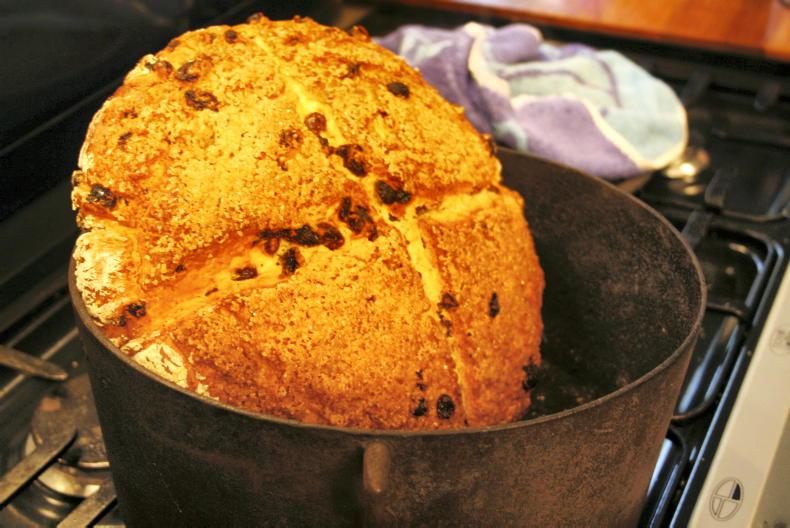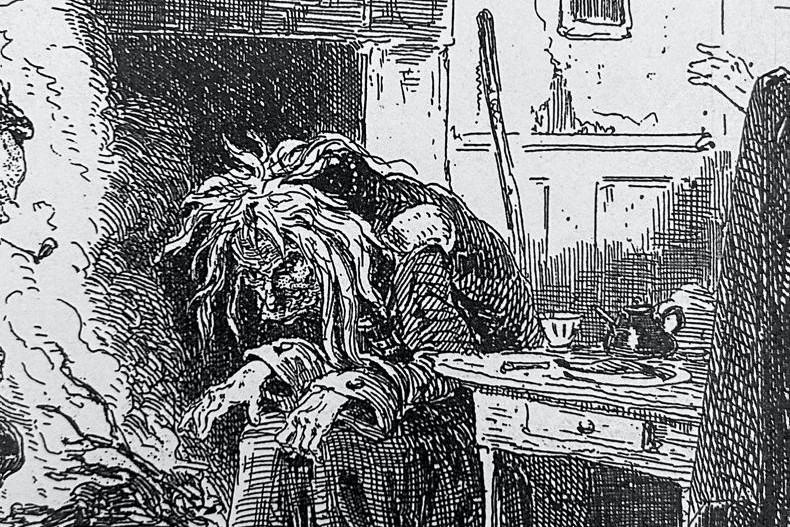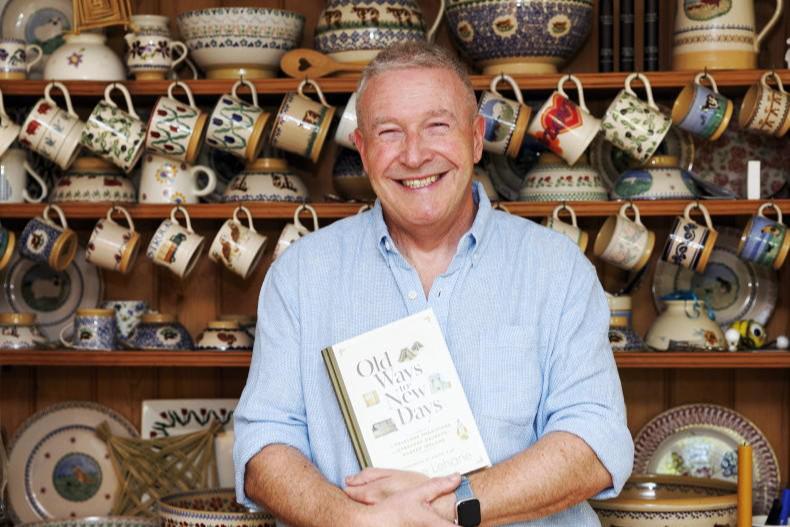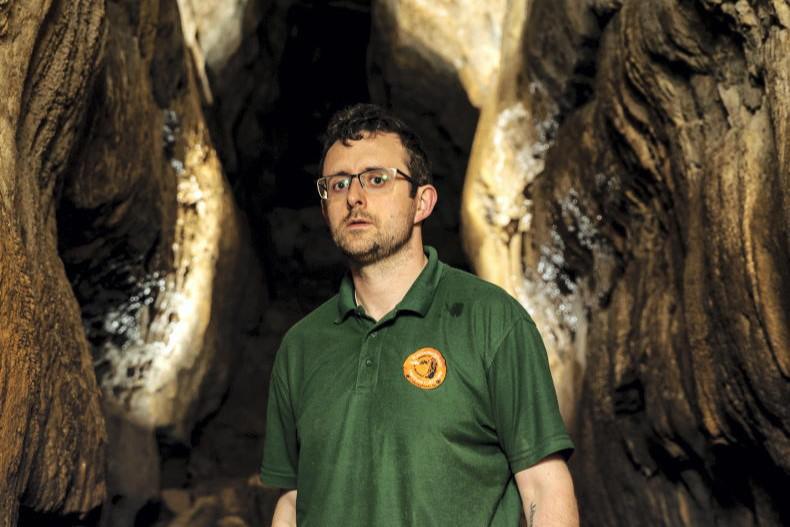In our deep ancient past, the great festival of Samhain marked both the end of the cycle of fertility and the beginning of the new year. It was the most auspicious time when the druids performed their rites and rituals to foretell the future in the hopes that all would augur well.
Therefore, it is not surprising that at Halloween, the present-day reflex of Samhain, there is an elaborate series of customs and traditions that centres on telling the future.
In the recent past, these were most often specific folk practices that might indicate future marriage prospects. Still to this day, many of us enjoy the barnbrack with its foretelling charms. Sadly, we’re now relegated to a single charm, the ring, lest people choke on the stick or the pea and sue the bakery. In the past, a whole assortment of charms was included: the ring for an early marriage, the pea for no marriage this year, the button for bachelorhood, the thimble for spinsterhood, the stick to be beaten by your partner, the coin for wealth, the rag for poverty, and finally, the holy medal to be a nun or priest.
Destiny
The original Halloween Báirín Breac ‘speckled cake’ was a homemade, white, soda bread enriched with sugar, eggs, and dried fruit and was the special treat and highlight of the night. The later use of brewers’ barm yeast in the bakeries may be the reason the cake is now popularly called a ‘Barmbrack’, but ‘Barnbrack’ best describes the homemade cake.
The barnbrack was sliced thickly and its charms, if visible at all, were well disguised by a thick lathering of butter. As each family member took their different slice, the revelations were at once either amusing or argumentative. In earlier times, the charms were mixed into a large pot of colcannon, made with steaming mashed potatoes and cabbage, and adorned with lakes of melting butter. The family would sit around the large pot, dipping their spoons into the traditional Halloween dish revealing the charms as they appeared.
Love and marriage predictions at Halloween was both a matter of great fun and great seriousness. In rural Ireland of the late 19th and early 20th centuries, the importance surronding inheritance of land, the provision of expensive dowries, and the diverse economic prospects of many meant that marrying someone for love and living happily ever after was a rare enough occurrence.
The benign charms of the barnbrack forecast the often cruel or limited fortunes of future life. Even in marriage, there was the chance of being beaten by a partner and not all would enjoy ease and wealth, but a lifetime of poverty and hardship. Many others were destined for a life of spinsterhood and bachelorhood with others taking refuge in holy orders.

The original Halloween Báirín Breac ‘speckled cake’ was a homemade, white, soda bread.
Foretelling
Telling of future lovers was one reason why the young girls would eat a salty herring before they went to bed. They had to eat the herring in three mouthfuls, without any drink, and their hope was that their future lover would appear to them at the foot of their bed with a drink of water to quench their thirst.
They also washed their ‘shift’ or nightdress – their most intimate undergarment – in the stream, expecting to see their future lover on the opposite bank. If he did not appear there, she hid in the corner of the kitchen as she believed he would come to turn the wet shift during the night as it dried in front of the fire.
One of the favourite foretelling amusements was to take two hazelnuts, each representing the girl and her lover, and perch them on the grate of the fire. After a little time, the intense heat of the fire would cause the shell of the hazelnut to crack, and the nut would hop up into the air. Each scenario was read with great interest; if the boy jumped before the girl or if they both jumped together or if one or other jumped into the fire or in the opposite direction, this would tell of their compatibility.
Halloween games
A number of fortune-telling and love divination Halloween rituals involved being blindfolded. A simple game was the placing of three saucers on the table, one with soil, a second with water and the third with a ring. Once blindfolded, the saucers were rearranged and the person whose future was about to be predicted groped about to find the saucer. The saucer they touched indicated their destiny; if they touched the soil this meant death within the year, water meant emigration and the ring meant marriage.
In a more risqué blindfolding exercise, the girls, full of mischief and fun, would go into the cabbage patch and pull up a head of cabbage to expose its root. The blindfold was taken off and the cabbage, turned, root upwards, became the focus of great discussion and uncontrollable laughter. Without being too explicit, the size and shape of the root was an indicator of their future lover’s ‘natural physique’.
In turn, the cabbage with its root was hidden in the corn stack and the first man to find it and pull it out was thought to be the young girl’s future husband.
Leaving a ribbon, handkerchief, feather, or unravelled reel of thread in the lime kiln was yet another ploy to uncover future suitors. In addition, melting lead and pouring it through the loop of a key into a bowl of cold water resulted in all manner of different shapes.
The key was owned by a widow or wise woman in the locality and it was she who would read the shapes as portents of the
future: a boat for emigration, a shoe to marry a cobbler, a tall hat for wealth, and so on.
The same woman was equally apt at reading the cards or the tea leaves and, throughout the long winter, many a young heart hung on every word she said in anticipation of courtship and the prospect of marriage at Shrove the following year.
Read more
Folklore: Fás aon Oíche - Mushrooms
Folklore: the wondrous blackberry
In our deep ancient past, the great festival of Samhain marked both the end of the cycle of fertility and the beginning of the new year. It was the most auspicious time when the druids performed their rites and rituals to foretell the future in the hopes that all would augur well.
Therefore, it is not surprising that at Halloween, the present-day reflex of Samhain, there is an elaborate series of customs and traditions that centres on telling the future.
In the recent past, these were most often specific folk practices that might indicate future marriage prospects. Still to this day, many of us enjoy the barnbrack with its foretelling charms. Sadly, we’re now relegated to a single charm, the ring, lest people choke on the stick or the pea and sue the bakery. In the past, a whole assortment of charms was included: the ring for an early marriage, the pea for no marriage this year, the button for bachelorhood, the thimble for spinsterhood, the stick to be beaten by your partner, the coin for wealth, the rag for poverty, and finally, the holy medal to be a nun or priest.
Destiny
The original Halloween Báirín Breac ‘speckled cake’ was a homemade, white, soda bread enriched with sugar, eggs, and dried fruit and was the special treat and highlight of the night. The later use of brewers’ barm yeast in the bakeries may be the reason the cake is now popularly called a ‘Barmbrack’, but ‘Barnbrack’ best describes the homemade cake.
The barnbrack was sliced thickly and its charms, if visible at all, were well disguised by a thick lathering of butter. As each family member took their different slice, the revelations were at once either amusing or argumentative. In earlier times, the charms were mixed into a large pot of colcannon, made with steaming mashed potatoes and cabbage, and adorned with lakes of melting butter. The family would sit around the large pot, dipping their spoons into the traditional Halloween dish revealing the charms as they appeared.
Love and marriage predictions at Halloween was both a matter of great fun and great seriousness. In rural Ireland of the late 19th and early 20th centuries, the importance surronding inheritance of land, the provision of expensive dowries, and the diverse economic prospects of many meant that marrying someone for love and living happily ever after was a rare enough occurrence.
The benign charms of the barnbrack forecast the often cruel or limited fortunes of future life. Even in marriage, there was the chance of being beaten by a partner and not all would enjoy ease and wealth, but a lifetime of poverty and hardship. Many others were destined for a life of spinsterhood and bachelorhood with others taking refuge in holy orders.

The original Halloween Báirín Breac ‘speckled cake’ was a homemade, white, soda bread.
Foretelling
Telling of future lovers was one reason why the young girls would eat a salty herring before they went to bed. They had to eat the herring in three mouthfuls, without any drink, and their hope was that their future lover would appear to them at the foot of their bed with a drink of water to quench their thirst.
They also washed their ‘shift’ or nightdress – their most intimate undergarment – in the stream, expecting to see their future lover on the opposite bank. If he did not appear there, she hid in the corner of the kitchen as she believed he would come to turn the wet shift during the night as it dried in front of the fire.
One of the favourite foretelling amusements was to take two hazelnuts, each representing the girl and her lover, and perch them on the grate of the fire. After a little time, the intense heat of the fire would cause the shell of the hazelnut to crack, and the nut would hop up into the air. Each scenario was read with great interest; if the boy jumped before the girl or if they both jumped together or if one or other jumped into the fire or in the opposite direction, this would tell of their compatibility.
Halloween games
A number of fortune-telling and love divination Halloween rituals involved being blindfolded. A simple game was the placing of three saucers on the table, one with soil, a second with water and the third with a ring. Once blindfolded, the saucers were rearranged and the person whose future was about to be predicted groped about to find the saucer. The saucer they touched indicated their destiny; if they touched the soil this meant death within the year, water meant emigration and the ring meant marriage.
In a more risqué blindfolding exercise, the girls, full of mischief and fun, would go into the cabbage patch and pull up a head of cabbage to expose its root. The blindfold was taken off and the cabbage, turned, root upwards, became the focus of great discussion and uncontrollable laughter. Without being too explicit, the size and shape of the root was an indicator of their future lover’s ‘natural physique’.
In turn, the cabbage with its root was hidden in the corn stack and the first man to find it and pull it out was thought to be the young girl’s future husband.
Leaving a ribbon, handkerchief, feather, or unravelled reel of thread in the lime kiln was yet another ploy to uncover future suitors. In addition, melting lead and pouring it through the loop of a key into a bowl of cold water resulted in all manner of different shapes.
The key was owned by a widow or wise woman in the locality and it was she who would read the shapes as portents of the
future: a boat for emigration, a shoe to marry a cobbler, a tall hat for wealth, and so on.
The same woman was equally apt at reading the cards or the tea leaves and, throughout the long winter, many a young heart hung on every word she said in anticipation of courtship and the prospect of marriage at Shrove the following year.
Read more
Folklore: Fás aon Oíche - Mushrooms
Folklore: the wondrous blackberry










SHARING OPTIONS